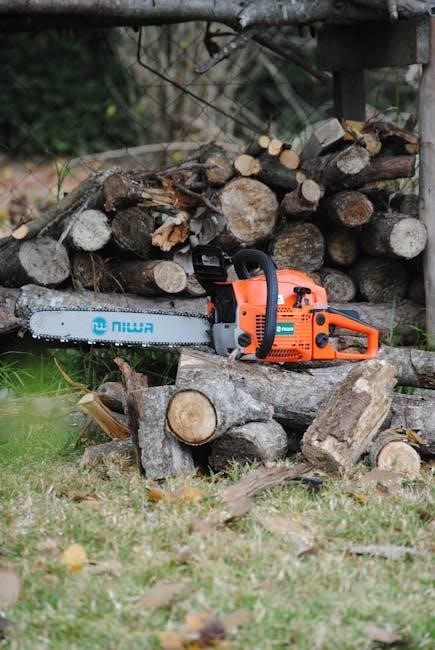The 2017 Subaru Forester maintenance schedule ensures optimal performance, safety, and longevity․ Regular servicing, including oil changes and inspections, prevents issues and maintains warranty coverage effectively․
Overview of the Importance of Regular Maintenance
Regular maintenance is crucial for ensuring the longevity, reliability, and optimal performance of your 2017 Subaru Forester․ By following the recommended schedule, you can prevent potential issues before they escalate, reducing the risk of costly repairs․ Routine services like oil changes, tire rotations, and inspections help maintain the vehicle’s efficiency and safety․ Neglecting scheduled maintenance can lead to premature wear on critical components, such as the engine, brakes, and suspension․ Additionally, regular servicing ensures compliance with warranty requirements and maintains the overall value of your vehicle․ Proper upkeep also enhances fuel efficiency and reduces the likelihood of unexpected breakdowns, providing peace of mind for drivers․ Consistency in following the maintenance schedule is essential for keeping your Subaru Forester in excellent condition․
Key Components of the 2017 Subaru Forester Maintenance Schedule
The 2017 Subaru Forester maintenance schedule is designed to ensure reliability and performance through routine checks and replacements․ Key components include oil changes every 6,000 miles, tire rotations, and air filter replacements․ Brake fluid, CVT fluid, and differential fluids are also serviced at specific intervals․ Inspections of belts, hoses, brakes, and suspension systems are critical for early detection of wear․ The schedule also includes replacing the cabin air filter and checking the cooling system․ Printable PDF versions of the schedule are available online, offering a detailed breakdown of services at each milestone․ Adhering to these components ensures your Forester runs smoothly, prevents costly repairs, and maintains its value over time․ Consistency in following the schedule is vital for optimal vehicle health․

30,000 to 60,000 Mile Maintenance Intervals
Regular maintenance between 30,000 to 60,000 miles includes oil changes, tire rotations, and inspections․ These routine services ensure optimal performance and prevent potential issues․
30,000 Miles Service Requirements
The 30,000-mile service for your 2017 Subaru Forester is designed to maintain its performance and longevity․ This service typically includes an oil and filter change, which is essential for keeping the engine lubricated and running smoothly․ Additionally, tire rotation is recommended to ensure even tread wear and improve handling․
- A brake inspection is performed to check the condition of brake pads and rotors, ensuring reliable stopping power․
- The belts and hoses are inspected for signs of wear or cracks to prevent unexpected failures․
- A suspension and steering system check is conducted to maintain stability and control on the road․
- The battery is tested to ensure it holds a proper charge and provides consistent starting power․
- An exhaust system inspection is done to identify any leaks or damage that could affect performance or safety․
These maintenance tasks are crucial for preventing wear and tear, ensuring your Subaru Forester continues to run efficiently and safely․

60,000 Miles Service Requirements
The 60,000-mile service for your 2017 Subaru Forester is a more comprehensive check to ensure long-term reliability․ This interval typically includes replacing the air filter to improve engine performance and fuel efficiency․ The PCV valve is also inspected and replaced if necessary to prevent oil leaks and maintain proper engine pressure․
- The drive belts are checked for cracks or wear and replaced if damaged to avoid sudden breakdowns․
- The brake fluid is replaced to maintain optimal braking performance and prevent corrosion in the brake system․
- The transmission and differential fluids are inspected and topped off to ensure smooth gear shifts and proper lubrication․
- A thorough inspection of the steering and suspension systems is performed to identify any wear or damage․
These services are designed to address wear and tear, ensuring your Subaru Forester remains in excellent condition for years to come․
90,000 Miles and Beyond Maintenance
At 90,000 miles, focus on replacing the timing belt, spark plugs, and coolant to prevent engine damage and ensure optimal performance for your Subaru Forester․

90,000 Miles Service Checklist
At 90,000 miles, the Subaru Forester requires a comprehensive inspection to ensure long-term reliability․ Replace the timing belt to prevent engine failure, as it typically wears out around this mileage․ Spark plugs should also be replaced to maintain proper engine performance and fuel efficiency․ Inspect and top off the coolant, and check the condition of the drive belts, which may need replacement if signs of wear are present․ Additionally, perform a thorough inspection of the suspension and steering components, as well as the exhaust system, to identify any potential issues․ This milestone is critical for preventing costly repairs and ensuring the vehicle runs smoothly for years to come․
96,000 Miles Service Recommendations
At 96,000 miles, the Subaru Forester requires specific attention to ensure optimal performance and longevity․ Replace the PCV (Positive Crankcase Ventilation) valve to maintain proper engine ventilation and prevent oil leaks․ Inspect and replace the brake pads and rotors if worn, as this mileage often reveals significant wear․ Additionally, replace the transmission fluid to ensure smooth gear shifts and extend the lifespan of the transmission․ Check the cabin air filter and replace it if dirty to improve air quality inside the vehicle․ Finally, inspect the vehicle’s frame and suspension for any signs of rust or damage, especially if driven in corrosive environments․ These services are critical for maintaining safety, performance, and reliability at this stage․

102,000 Miles Service Interval
At 102,000 miles, the Subaru Forester requires a detailed service to address wear and tear․ Replace the timing belt to prevent engine failure, as it typically reaches its lifespan around this mileage․ Spark plugs should be replaced to ensure proper combustion and engine efficiency․ Check and replace the coolant if necessary, as degradation can occur over time․ Inspect the battery terminals for corrosion and test the battery’s charge capacity․ Additionally, examine the exhaust system for leaks or damage․ Replace the air filter if dirty to maintain proper airflow․ Finally, inspect the drive belts for cracks or wear and replace them if needed․ These steps ensure the vehicle remains reliable and performs optimally at this high mileage․

108,000 Miles Service Details
At 108,000 miles, the Subaru Forester requires a comprehensive service to ensure long-term reliability․ Replace the timing belt if it hasn’t been done earlier, as failure can cause severe engine damage․ Spark plugs should be replaced to maintain combustion efficiency․ Inspect and replace the PCV valve to prevent oil leaks and sludge buildup․ Brake fluid replacement is recommended to ensure proper braking performance․ Inspect the suspension and steering components for wear, and replace any damaged parts․ Additionally, check the exhaust system for leaks or damage․ Finally, review the vehicle’s maintenance history and address any outstanding issues․ This service interval ensures the Forester continues to run smoothly and safely, avoiding costly repairs down the road․

Essential Maintenance Tasks
Regular oil changes, tire rotations, and inspections ensure optimal performance and longevity of the Subaru Forester․ These tasks are critical for maintaining reliability and safety․
Engine Oil and Filter Replacement
Regular engine oil and filter replacement is vital for the 2017 Subaru Forester․ Subaru recommends oil changes every 6 months or 6,000 to 7,500 miles, depending on driving conditions․ Synthetic 0W-20 oil is preferred for optimal performance and fuel efficiency․ The oil filter should be replaced at each service interval to ensure clean oil circulation and prevent engine damage․ For drivers in severe conditions, such as frequent stop-and-go traffic or extreme temperatures, Subaru advises more frequent oil changes, every 3,750 to 5,000 miles․ Additionally, synthetic oil can extend the interval up to 15,000 miles under normal driving conditions․ Always use genuine Subaru oil filters to maintain quality and prevent contamination․
Tire Rotation and Inspection
Tire rotation and inspection are essential for maintaining even tread wear and ensuring safety on the road․ For the 2017 Subaru Forester, tire rotation is recommended every 7,500 to 15,000 miles, depending on driving conditions․ Subaru suggests following a specific rotation pattern to balance wear and maintain handling․ During each service, inspect tires for uneven wear, cracks, or damage․ Proper tire pressure should also be verified, as specified in the owner’s manual․ Additionally, wheels should be aligned periodically to prevent uneven tire wear․ Regular tire care helps improve fuel efficiency, reduces the risk of tire failure, and ensures optimal performance․ Always refer to the Subaru maintenance schedule for precise intervals tailored to your driving habits․
Brake Fluid Replacement
Brake fluid replacement is a critical maintenance task for the 2017 Subaru Forester to ensure reliable braking performance․ Subaru recommends replacing the brake fluid every 30,000 miles or as specified in the maintenance schedule․ Over time, brake fluid can absorb moisture, which may lead to a reduction in braking efficiency and potential system damage․ During this service, the entire brake system is inspected for leaks, and the fluid level is checked․ Fresh brake fluid improves pedal feel, prevents corrosion in the brake components, and ensures optimal safety․ Always use the brake fluid type specified by Subaru to maintain system integrity․ Regular brake fluid replacement is essential for maintaining the Forester’s stopping power and overall safety on the road․

Additional Services and Inspections
Regular inspections of belts, hoses, and fluid levels, along with checks for wear in suspension and steering components, ensure optimal vehicle performance and safety․
Air Filter Replacement (Engine and Cabin)
The 2017 Subaru Forester requires regular replacement of both the engine and cabin air filters to maintain optimal performance and air quality․ The engine air filter should be replaced every 15,000 to 30,000 miles, depending on driving conditions, to ensure proper airflow and fuel efficiency․ The cabin air filter, which improves interior air quality, should be replaced every 12,000 to 18,000 miles or when signs of wear appear․ Dirty filters can lead to reduced engine power, lower fuel efficiency, and unhealthy cabin air․ Always use genuine Subaru filters or equivalent high-quality replacements to maintain your vehicle’s performance and warranty․ Regular inspection and replacement of these filters are crucial for long-term reliability and comfort․
Drive Belt and Fuel System Inspections

Regular inspections of the drive belt and fuel system are essential for the 2017 Subaru Forester to ensure reliability and performance․ The drive belt should be checked every 30,000 miles for signs of wear, cracks, or misalignment, as failure can lead to engine damage․ The fuel system should be inspected for leaks, corrosion, or blockages in the fuel lines, injectors, and connections․ Proper maintenance helps prevent fuel inefficiency, poor engine performance, and potential safety hazards․ Subaru recommends these inspections at major service intervals, such as 30,000, 60,000, and 90,000 miles, to maintain the vehicle’s health and longevity․ Addressing issues early can prevent costly repairs and ensure smooth operation․
Steering and Suspension Checks
Regular inspections of the steering and suspension systems are crucial for maintaining the 2017 Subaru Forester’s stability and handling․ Subaru recommends checking these components at intervals of 30,000 and 60,000 miles․ Key areas include inspecting the steering rack, tie rods, and power steering components for wear or leaks․ The suspension system, comprising shocks, struts, and springs, should be examined for signs of damage or excessive wear․ Additionally, wheel alignment should be verified to ensure proper tire wear and vehicle stability․ These checks help prevent costly repairs by identifying issues early and ensuring safe, precise steering and handling․ Proper maintenance also enhances overall driving comfort and safety, aligning with Subaru’s commitment to reliability and performance․
Sticking to the 2017 Subaru Forester maintenance schedule ensures reliability and performance․ Download the printable PDF from Subaru’s official website for detailed guidelines and schedules․
Importance of Following the Schedule
Following the 2017 Subaru Forester maintenance schedule is crucial for preserving the vehicle’s performance, safety, and longevity․ Regular servicing ensures that all components function optimally, preventing unexpected breakdowns and costly repairs․ By adhering to the recommended intervals, owners can maintain fuel efficiency, reduce emissions, and uphold the integrity of the engine and other critical systems․ Neglecting scheduled maintenance may lead to premature wear and tear, compromising the vehicle’s reliability․ Additionally, staying on track with maintenance can protect the car’s resale value and ensure compliance with warranty terms․ Subaru’s detailed schedule is designed to address specific needs at each milestone, making it a vital resource for responsible ownership․
Accessing the Printable PDF Schedule

Obtaining the 2017 Subaru Forester maintenance schedule in PDF format is straightforward and convenient․ Subaru provides official resources through its website, allowing owners to download or print the schedule for easy reference․ The PDF document outlines every service interval, inspection checklist, and recommended procedure, ensuring clarity and organization․ Additionally, the PDF can be accessed through the Subaru owner’s portal or by contacting a local dealership․ Having a printable copy enables owners to track maintenance progress, set reminders, and stay proactive about their vehicle’s care․ This resource is invaluable for ensuring compliance with Subaru’s recommendations and maintaining the Forester’s optimal performance and longevity․
